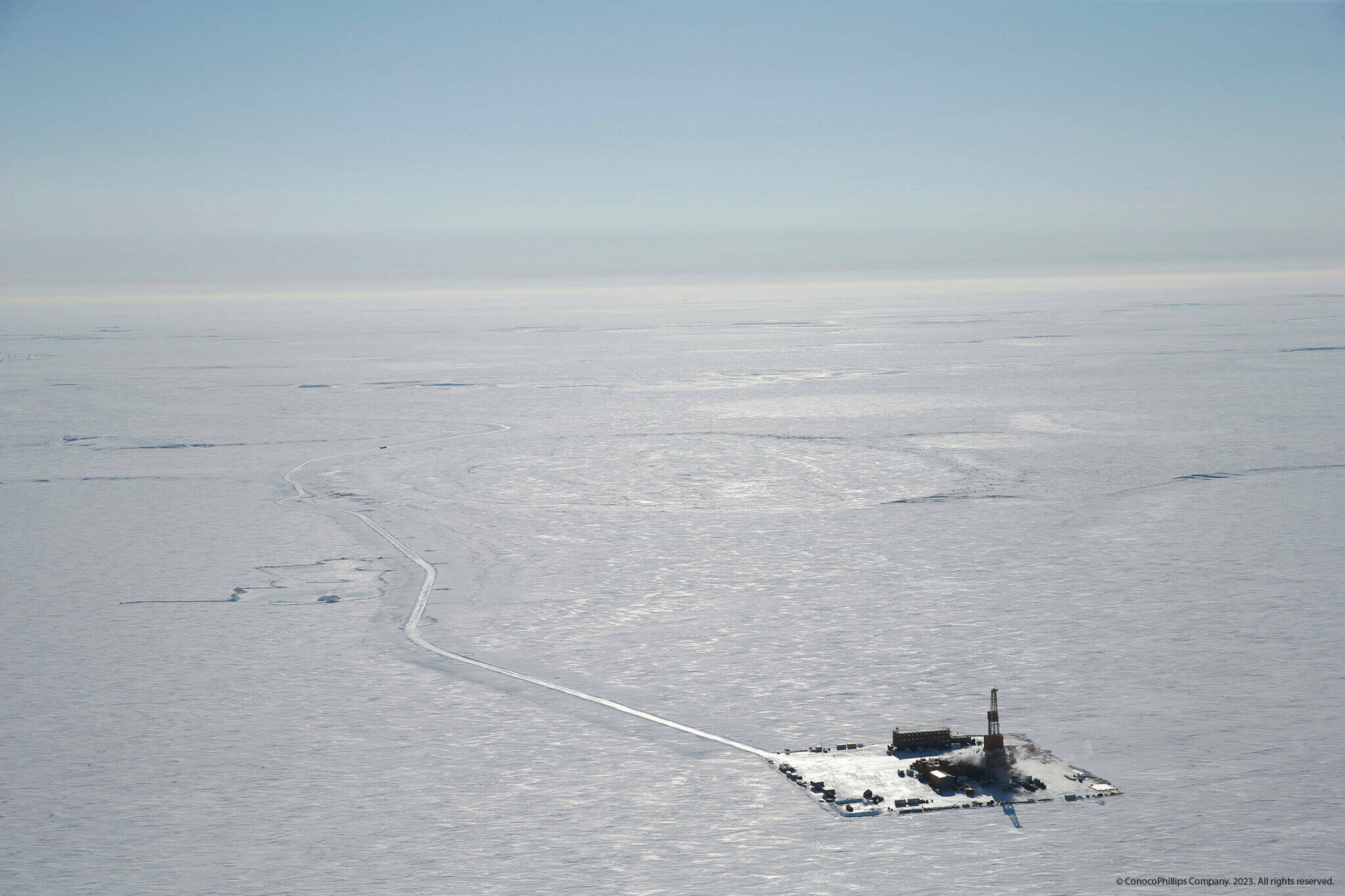Two coalitions of environmental groups, having lost their case in an Alaska courthouse, are asking the 9th U.S. Circuit Court of Appeals to issue an order that would halt work on Alaska’s largest oil development in decades.
On Tuesday, the coalitions filed separate appeals with the 9th Circuit. They argue that Judge Sharon Gleason made a mistake when she allowed work to proceed on the Willow project.
The groups, which include the Center for Biological Diversity and the Sovereign Inupiat for a Living Arctic, claimed in a pair of lawsuits filed last year that the federal government acted erroneously when it approved permits for Willow, which is expected to produce as much as 180,000 barrels of oil per day at peak production.
Gleason ruled against the plaintiffs, who said at the time that they planned to appeal.
ConocoPhillips, the oil company developing Willow, has already begun a massive winter construction effort, and a negative ruling by the 9th Circuit could impact its schedule. The state of Alaska, federal government and the North Slope Borough stand to gain billions of dollars in tax revenue if Willow proceeds to full production.
Plaintiffs in the appeal say that if Willow is allowed to proceed, it will have significant effects on global climate due to resulting greenhouse gas emissions.
The 9th Circuit has not yet set a timeline to hear the appeal.
• James Brooks is a longtime Alaska reporter, having previously worked at the Anchorage Daily News, Juneau Empire, Kodiak Mirror and Fairbanks Daily News-Miner. This article originally appeared online at alaskabeacon.com. Alaska Beacon, an affiliate of States Newsroom, is an independent, nonpartisan news organization focused on connecting Alaskans to their state government.


